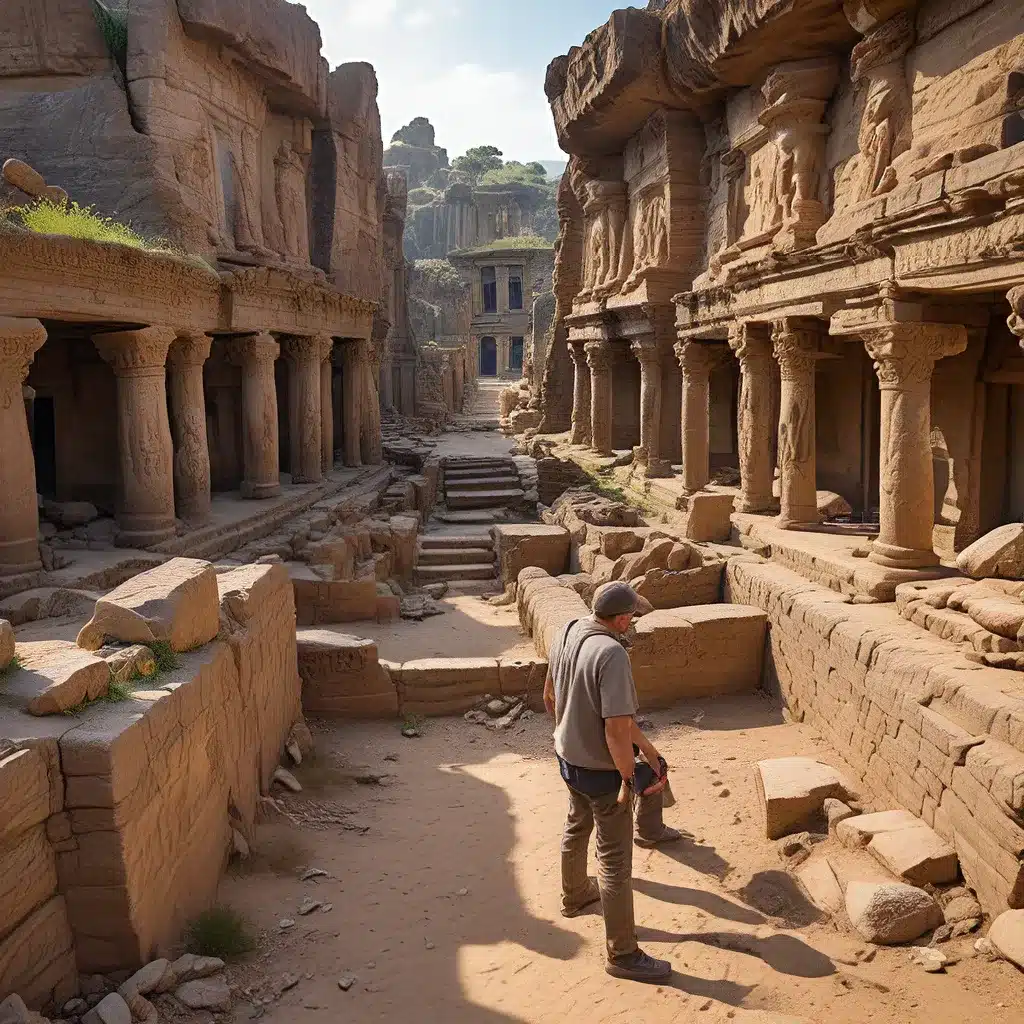
Unveiling the Mysteries of Ancient Civilizations
The world is full of untold stories, hidden in the depths of forgotten landscapes and buried beneath the sands of time. From the towering Maya cities that once dominated Central America to the enigmatic Mayan culture that captivates the imaginations of scholars and adventurers alike, the quest to uncover the secrets of lost worlds has long been a driving force in the field of archaeology.
In recent years, groundbreaking discoveries have shed new light on the rise and fall of ancient societies, challenging long-held beliefs and opening up new avenues of exploration. One such remarkable finding is the Ocomtún, an ancient Maya city that was recently unearthed in the heart of Mexico’s Balamkú Ecological Conservation Zone. This discovery, made by the renowned archaeologist Dr. Ivan Šprajc, has the potential to rewrite our understanding of the Maya civilization and its remarkable achievements.
The Lost City of Ocomtún: A Forgotten Jewel Revealed
For decades, the central Yucatán Peninsula remained a “black hole” on the archaeological map of the Maya Lowlands, with no known sites dotting the vast, biodiverse wilderness. But Šprajc and his team, armed with the latest technology, have managed to uncover a hidden treasure trove of ancient Maya ruins.
The Ocomtún, a city that was likely inhabited between 600 and 800 CE, boasts an impressive architectural layout, including pyramid-shaped structures rising over 15 meters, plazas, and intricately carved stone columns. The discovery of this previously unknown Maya settlement has sent shockwaves through the archaeological community, shedding new light on the rich cultural heritage and complex sociopolitical organization of the Maya people.
Mapping the Unseen: The Power of Lidar Technology
The Ocomtún site is a testament to the transformative power of Lidar technology, which has revolutionized the way archaeologists conduct their research in dense, inaccessible environments. By using airborne laser scanning, Šprajc and his team were able to map the landscape and identify man-made changes that would have otherwise remained hidden beneath the thick jungle vegetation.
“We knew there was something quite important there, but we couldn’t imagine what exactly we’d find,” Šprajc recounts. “When we got there, our suspicions were confirmed – architecturally, it was truly massive. So, it’s clear this must have been a politically important center.”
The Ocomtún site, with its sprawling 80-meter acropolis and towering pyramids, suggests that it was a significant urban center within the Maya civilization. The discovery of this previously unknown city has the potential to shed light on critical questions surrounding the rise and fall of the Maya, as well as their daily life and cultural practices.
Unlocking the Secrets of the Maya: A Civilization in Crisis
The Maya civilization, considered one of the greatest in the Western Hemisphere, flourished for centuries, leaving behind an impressive legacy of towering pyramid temples, grand cities, and advanced astronomical and mathematical knowledge. However, the sudden abandonment of these once-thriving metropolises in the 8th and 9th centuries CE has long been a subject of intense scholarly debate.
Theories abound as to the causes of this Maya collapse, with warfare, prolonged droughts, soil depletion, and climatic change all proposed as potential factors. The rediscovery of the Ocomtún and other lost Maya cities may provide crucial clues to unraveling this great mystery, shedding light on the ideological and population changes that ultimately led to the downfall of this remarkable civilization.
A Resilient People: The Enduring Legacy of the Maya
Despite the devastation of the Spanish conquest in the 16th century, which claimed the lives of an estimated 90% of the Maya population, the Maya culture has never truly disappeared. Today, an estimated six to eight million Maya people, speaking 28 distinct Maya languages, continue to thrive in Guatemala, Belize, western Honduras, El Salvador, and southern Mexico.
The rediscovery of the Ocomtún and other lost Maya cities serves as a powerful reminder of the resilience and enduring legacy of this remarkable civilization. As archaeologists and scholars continue to uncover the secrets of the Maya, we gain a deeper understanding of their cultural achievements, their relationship with the natural world, and the lessons they can offer us in navigating the complexities of our own modern era.
Exploring the Frontiers of Ancient History
The quest to uncover the secrets of lost worlds is not limited to the Maya civilization alone. Across the globe, archaeologists and adventurers are pushing the boundaries of our understanding of the past, unearthing the remnants of forgotten civilizations and shedding light on the mysteries that have long captivated the human imagination.
From the floating cities of Rama to the labyrinthine Time Tombs of Hyperion, the science fiction genre has long explored the allure of ancient, unknowable structures and the tantalizing possibilities they hold. In the real world, archaeological discoveries continue to challenge our preconceptions and rewrite the narrative of human history.
The Thrill of the Unknown: Uncovering the Past
For Dr. Ivan Šprajc and other intrepid archaeologists, the journey to uncover the secrets of lost worlds is not without its challenges. The treacherous terrain, dangerous wildlife, and dense vegetation that often guard these ancient sites can test the limits of human endurance. Yet, the thrill of discovery and the promise of revealing long-buried truths drive these modern-day Indiana Joneses to push ever deeper into the unknown.
“You have to be a little crazy for this work,” Šprajc admits, “but there is something pushing us. You have to suffer a little if you want to find something that few people have ever seen, that was hidden for so many centuries.”
As we continue to explore the frontiers of ancient history, the lost worlds of the past hold the key to unlocking our understanding of the present and shaping our vision for the future. The journey of archaeological discovery is one of perseverance, curiosity, and a steadfast commitment to preserving the stories of those who came before us.


